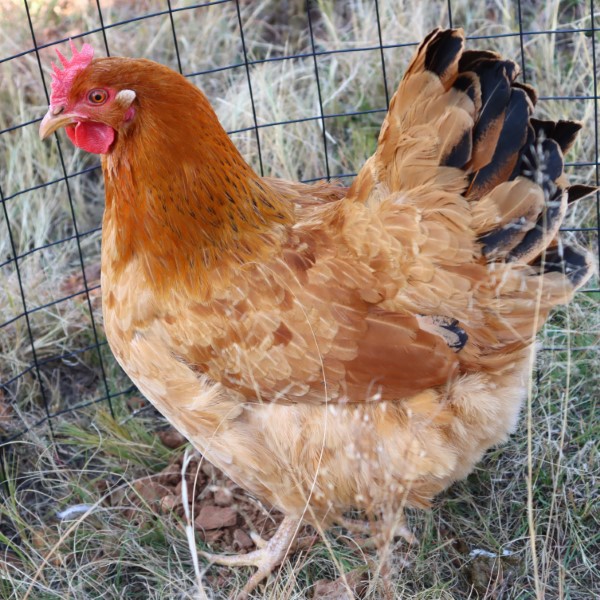

The New Hampshire is a relatively new breed, less than 100 years old. It was developed in New Hampshire and Massachusetts and is a separate strain of the Rhode Island Red. Beginning about 1915, New Hampshire poultry breeders began to continually selection hens from Rhode Island Red strains that feathered, grew, matured faster and had a light under colour.
Due to the intensive selection, a different breed emerged and was named after one of the states where it was developed – New Hampshire. The breed was admitted to the American Poultry Association Standard of Perfection in 1935 and imported to South Africa in 1947.
Chickens were an important source of protein during the second war, and after the war there was even a greater demand for poultry meat. In response, New Hampshires were promoted in the “Chicken of Tomorrow” contests that became popular in the US in the late 1940s. Although the New Hampshire birds didn’t win these contests, they were one of the first breed used to establish the broiler industry. They were also used in the development of the Delaware chicken.
The New Hampshire has a more triangular shape than the Rhode Island Red. They have a deep, broad body, feather rapidly, and are prone to go broody, so they make good mothers. They are a dual-purpose breed, laying about 280 large, tinted to brown eggs a year. Some strains lay eggs with a pink shell colour.
They are red, but closer to a chestnut than mahogany, and they may have pale yellow highlights – though the sun can bleach out the feathers to an even lighter shade. Most pin feathers are a reddish buff or salmon in colour and, therefore, do not detract from the carcass appearance. Roosters have black tail feathers, and hens may as well. Hens may also have black tipping on their neck and wings. Their eyes are orange, and their beak is a reddish/horn colour. The comb is single and medium to large in size; in the females it often flops over a bit. They have clean shanks and four toes which are yellow; there is a reddish line that runs from shank to toes. Their skin is yellow. Males weigh about 3.5kgs and hens 3kgs.
The New Hampshire is usually a family-friendly chicken and good for beginners, although they can be food-competitive with other breeds. They do well in both cold and warm climates if housed appropriately.
Their rapid maturation, early sexual dimorphism (they can be sexed early due to visually different traits for either sex), respectable meat and egg production makes the New Hampshire one of the best dual-purpose breeds available today. Their regal and beautiful appearance and their prolific production of large eggs produced make them a MUST-HAVE breed for the plot and the urban chicken keepers.
